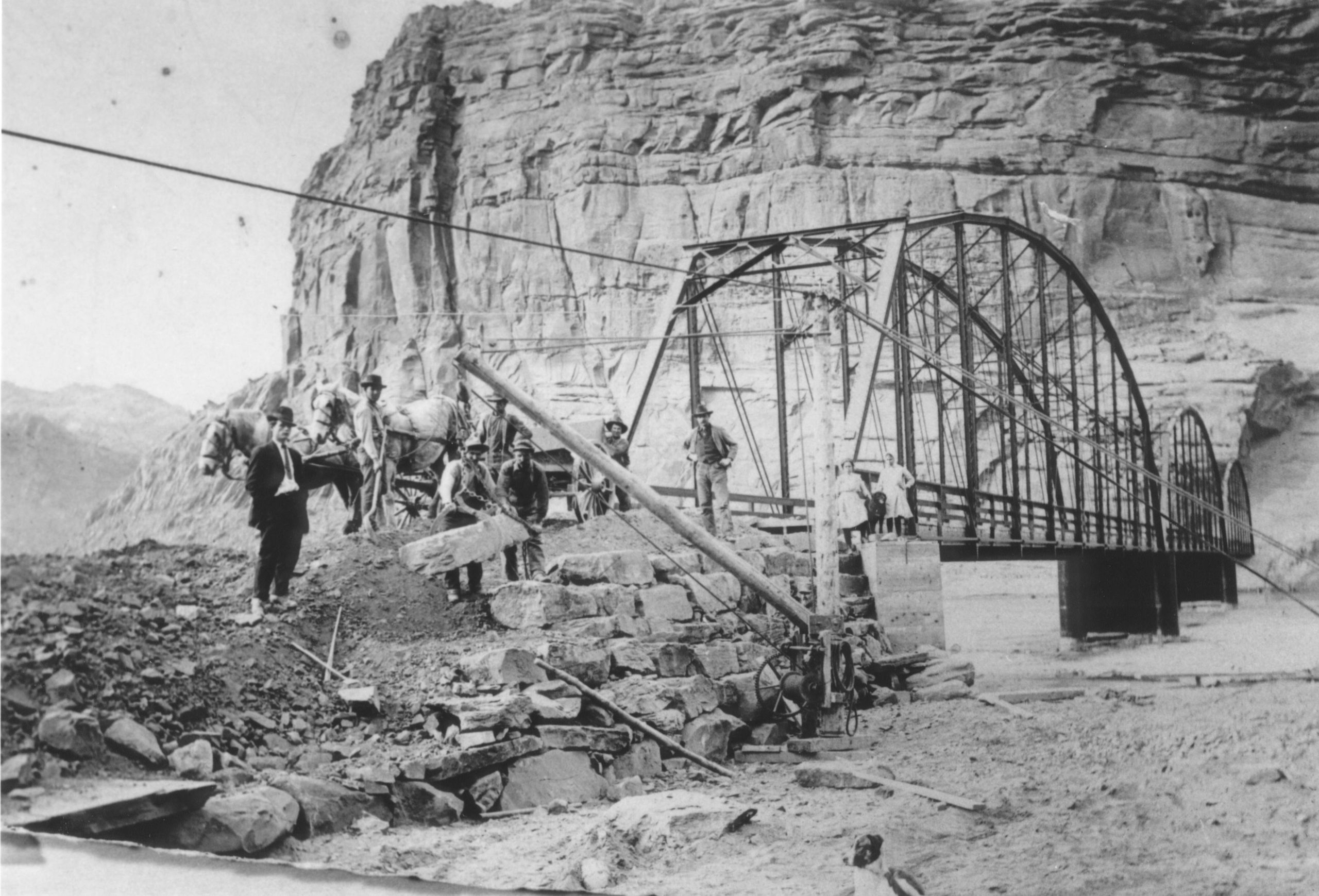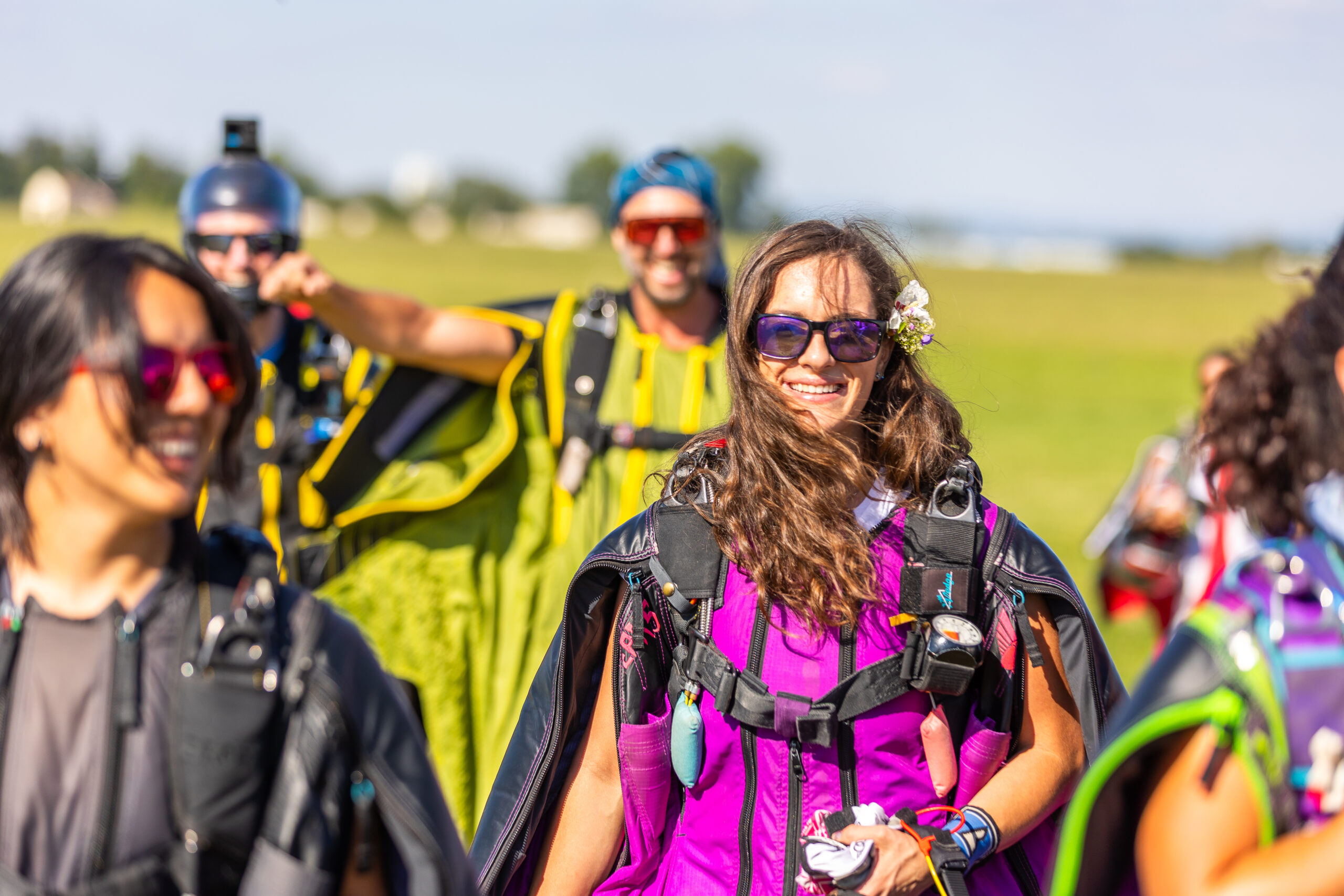Some information may be outdated.
Throughout time, travel patterns across the Colorado Plateau have been determined by the landscape’s dramatic geography– carved by rivers to create canyons among high plateaus and swells. The Colorado River (known as the Grand until 1921) is one of the largest rivers in the United States; the watershed extends across seven states and most of the Rocky Mountains’ western slope, and it has long been a formidable barrier to travel due to the steep topography created by its drainage.
The many groups of Indigenous peoples who have lived on the Plateau since before Euro-Americans arrived had names for the river as diverse as their cultures. The Havasupai name, Chicamimi Hackatai, means “Large Canyon with Roaring Sound.” The Paiutes gave the river a name that translates to “Long Way Down to the Water” and the Hopi called it Pisishibauii, which means “Where the Water Flows.”
The gently sloping Moab Valley is one of few places along the Colorado River where people travelling across the Colorado Plateau can easily approach and cross the mighty river, which is why this area has long been (and remains) a travel route for the variety of peoples who have moved through Utah.
In the settler community of Moab around the turn of the twentieth century, enterprising businessmen saw the potential economic benefit of devising a crossing across the Colorado River. In 1882, Norman Taylor started piloting a 28-foot rowboat across the river, and two years later built a 60-foot boat capable of carrying a horse- or ox-drawn wagon pulled across the river by cables and ropes.
While ferry service continued, attempts to create a tour boat industry struggled. A 60-foot-long coal-powered boat named the Undine was launched in 1901, only to tip over and sink, the crew barely escaping with their lives. In 1905, a 55-foot boat named the City of Moab (its intended destination) was launched from Green River with much fanfare…but its maiden voyage ended on a sandbar. After being repaired and renamed the Cliff Dweller, the craft continued to get stuck on sand bars and was retired from service. In 1907, a boat named the Black Eagle’s maiden voyage from Green River ended when its boiler exploded after copper tubes became clogged with silt. Navigating and crossing the Colorado by boat, with its ever-shifting riverbed and rapids, had quickly proved itself to be a challenging and risky business.
When the first bridge across the Colorado River in Moab was completed in 1916, the era of ferry boats to town ended. Though much has changed in the century since then, Moab continues to be one of few feasible places to cross the Colorado River as it passes through the canyon country of the Southwest, as it has been for thousands of years before the bridge.
The Moab Museum is dedicated to sharing stories of the natural and human history of the Moab area. To explore more of Moab’s stories and artifacts, find out about upcoming programs, and become a Member, visit www.moabmuseum.org.
Appreciate the coverage? Help keep local news alive.
Chip in to support the Moab Sun News.





